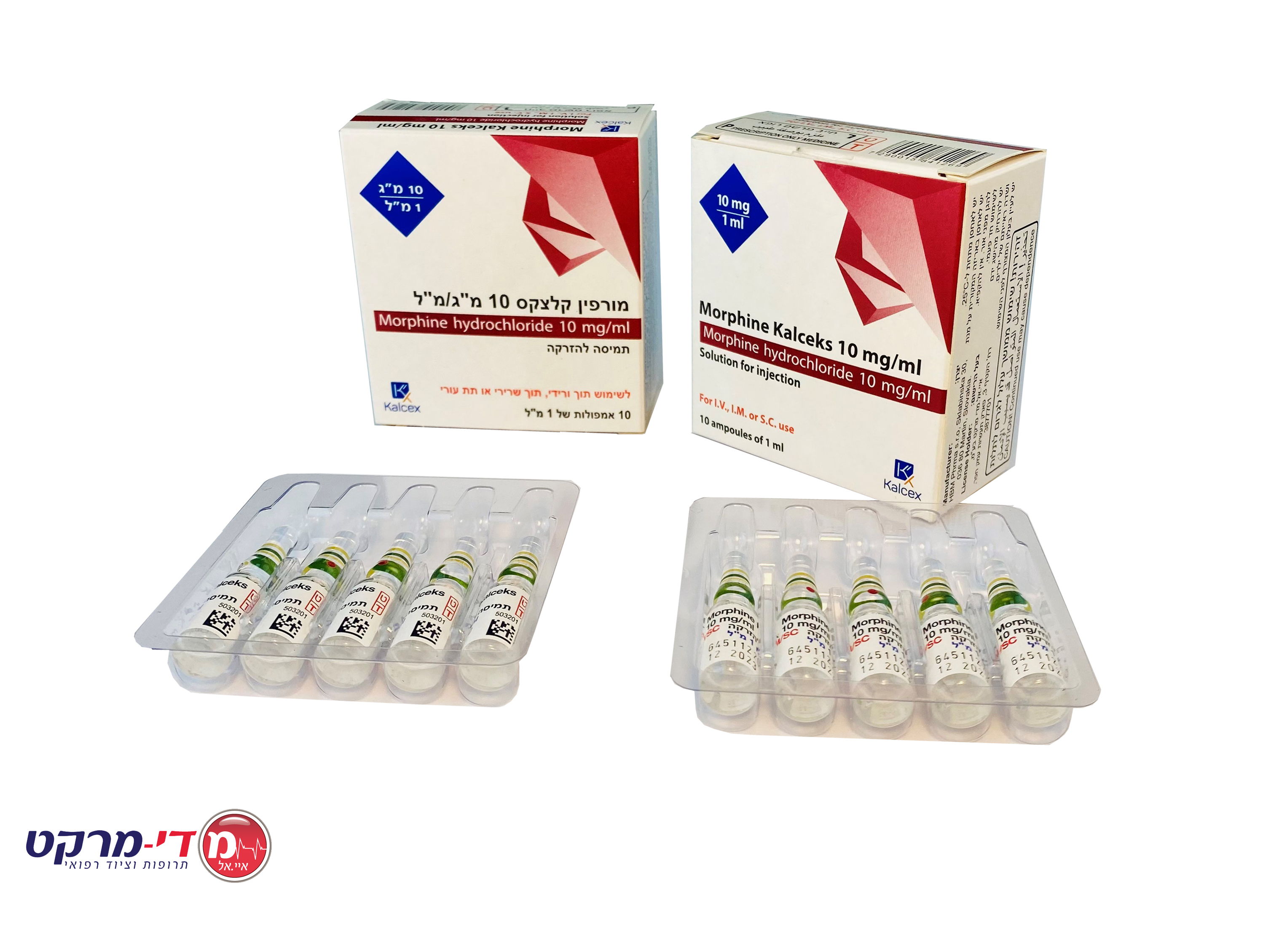Quest for the right Drug

מורפין קלצקס 10 מ"ג/מ"ל MORPHINE KALCEKS 10 MG/ML (MORPHINE HYDROCHLORIDE)
תרופה במרשם
תרופה בסל
נרקוטיקה
ציטוטוקסיקה
צורת מתן:
תת-עורי, תוך-שרירי, תוך-ורידי : S.C, I.M, I.V
צורת מינון:
תמיסה להזרקה : SOLUTION FOR INJECTION
עלון לרופא
מינוניםPosology התוויות
Indications תופעות לוואי
Adverse reactions התוויות נגד
Contraindications אינטראקציות
Interactions מינון יתר
Overdose הריון/הנקה
Pregnancy & Lactation אוכלוסיות מיוחדות
Special populations תכונות פרמקולוגיות
Pharmacological properties מידע רוקחי
Pharmaceutical particulars אזהרת שימוש
Special Warning עלון לרופא
Physicians Leaflet
Posology : מינונים
4.2 Posology and method of administration Posology Administration and posology should be adjusted according to the nature and severity of the pain as well as the general condition of the patient. Individual criteria for the dose are dependent on the patient’s age, weight, pain severity and medical and analgesic history. Adults Subcutaneous or intramuscular injection The usual dose by subcutaneous or intramuscular injection is 5-20 mg (0.5-2 ml) every 4 hours. Intravenous injection Doses of up to 15 mg (1.5 ml) have been given by slow intravenous injection, sometimes as a loading dose for continuous or patient controlled infusion. Elderly Because of the depressant effect on respiration, caution is necessary when giving morphine to the elderly. A reduction of dose is advisable. Hepatic Impairment: Morphine may precipitate coma in hepatic impairment – avoid or reduce dose. Renal Impairment A reduced maintenance dose may be necessary in moderate to severe impairment. Discontinuation of therapy An abstinence syndrome may be precipitated if opioid administration is suddenly discontinued. Therefore, the dose should be gradually reduced prior to discontinuation. Method of administration Parenteral drug products should be inspected visually for particulate matter and discoloration prior to administration, whenever solution and container permit. For intravenous, intramuscular or subcutaneous use. The subcutaneous route is not suitable for oedematous patients. Notes: 1. Resuscitative equipment and medications, including a specific antagonist (naloxone HCl injection) should be immediately available for management of respiratory depression or other complications that may arise from inadvertent morphine intravascular administration. Also, facilities for adequate monitoring of the patient’s respiratory status must be available for 24 hours after each dose since delayed respiratory depression may occur. 2. Rapid I.V. injection of most opioid analgesics has caused chest wall rigidity, anaphylactoid reactions, severe respiratory depression, hypotension, peripheral circulatory collapse and cardiac arrest. The patient usually should be lying down and should remain recumbent for a period of time to minimize side effects such as hypotension, dizziness, lightheadedness, nausea and vomiting. If these side effects occur in an ambulatory patient, they may be relieved if the patient lies down. An opioid antagonist and equipment for artificial ventilation should be available.

שימוש לפי פנקס קופ''ח כללית 1994
לא צוין
תאריך הכללה מקורי בסל
לא צוין
הגבלות
לא צוין
מידע נוסף
